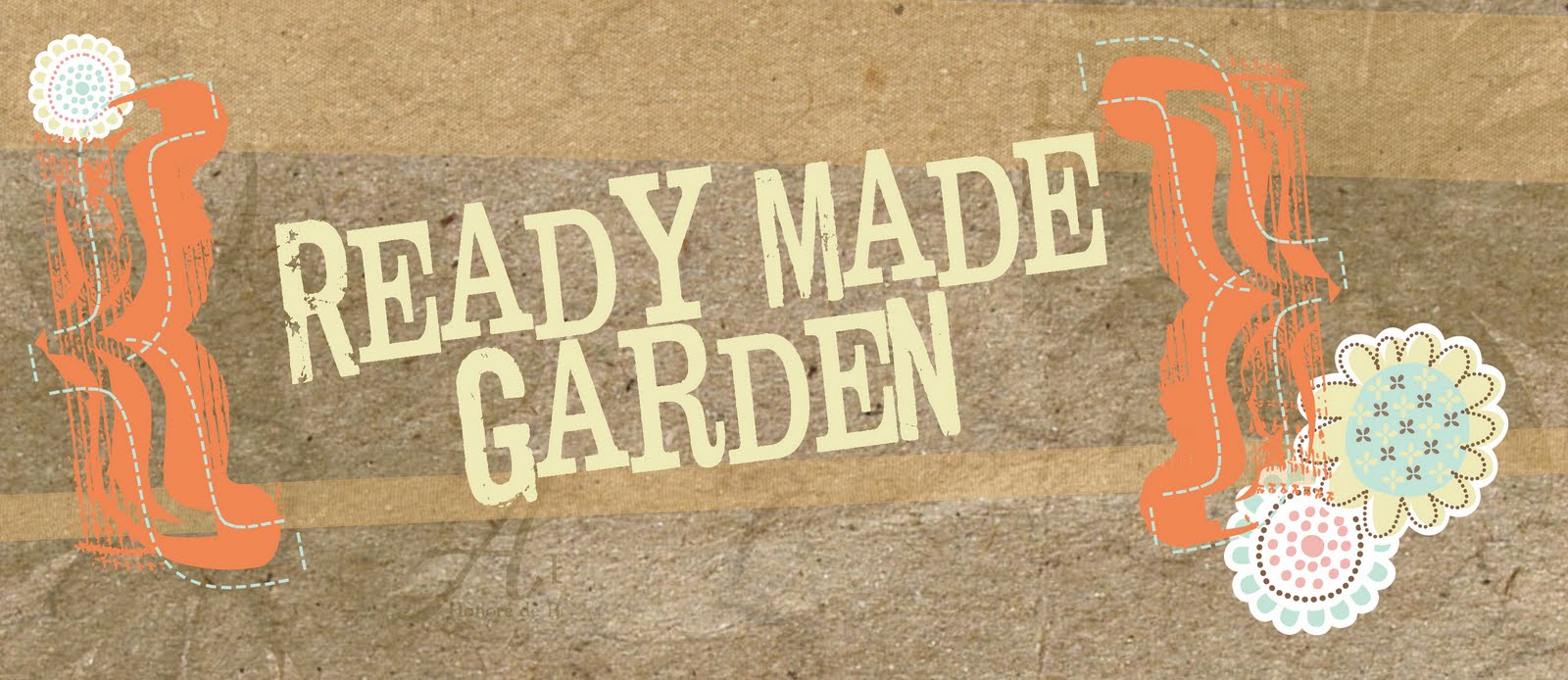This post represents DAY 6 of the day-by-day documentary of the gardening adventures of a newly-wed first-time gardening couple. They are not only first-time bucket gardeners but first-time any kind of gardeners. The details of their successes and failures will be communicated here so you can follow along with your garden - if you wish. To see links to each of the "days" click here.
Day 6: The Garden Must Go On
I woke up this morning with a serious case of the stomach flu - work only lasted 1 hour... I think it turned out to be a blessing because I was able to get all prepped for planting this evening with my time at home. In hindsight, there is no way I could have accomplished everything in the garden I wanted to today if I hadn't been home from work sicky... But it would have been nice to just sleep and relax today - oh well - the garden must go on.
I spent my time in between trips to the bathroom researching companion plants. I used information from Ted's website and I also did lots of research here. {If you decide to do research on this website let me share with you a simple trick that will make things much quicker. Once you are on the page hold down the Ctrl key on your keyboard and press the F key on your board at the same time. You will see a 'find' box pop up somewhere on the page - mine pops up at the top. In this find box type in the produce you are looking for (i.e. bean) to quickly find info about it under its own heading and also under the headings of all the other plants that reference the one you are looking for.}
The biggest controversy on companion plants between these two sources are peppers and tomatos - Ted says never plant them together - this site says it's ok... I decided to do my own little experiment regarding this conflict so you will notice my schematic has a few primary peppers next to primary tomatos. Speaking of the schematic would you like to see mine?
Here is the bag summary
And here are the planting layouts for each of the bags - only the plants shaded white were planted today. You will notice lots of empty space in my bags - that will be filled in about 2 weeks - and filled even more in another 2 weeks = and filled even more in another 2 weeks - etc. This way we won't be producing more than we can eat. {Disclaimer - these layouts are my best guess - don't think they are 100% perfect - I'm learning here too!}
If any of you would like a Microsoft Excel file with these layouts leave me a comment with your email and I would be more than happy to send you one. That way you can adjust it for your individual families.
Once I had these layouts finished I ran to the store to buy my seeds - any guess how much this many seeds costs?
$41.72... I could have found better deals but I was famished and had to get these babies planted before I passed out from lack nutrition.... $41.72 isn't bad considering that is how much it costs for the produce I buy for 1.5 weeks from the grocery store... Also, there is no way we will use all of these seeds this year and they will be great to use next year!
There were a few varieties I could not find {Kale, Summer Savory, Celery...} so I had to adjust my layouts accordingly. I will add these items when I plant again in 2ish weeks.
Next it was planting time - hooray! The location we chose for our garden is about 20 min. away from our house and is part of where my husband works... Long story... Maybe I'll tell you about it on a day where we don't have sooo much to go over.
We started by planting the primary plants that I have been taking care of the past few days. They were easy!
Step1: Dig a hole
Step 2: Carefully remove plant from it's pot and place it the hole {I squooze the outsides of the pots lightly to loosen the dirt around the edges then tipped the pot upside down and held the plant gently at its stem - I was very careful not to touch any roots}
Step 3: Push the sand around the plant - I made sure to dig my hole deep enough so that I could cover the dirt with 1/4 inch of sand.
See - it's super simple! To plant the peas and beans I pushed about 1/2 inch deep holes into the sand with my pointer finger - dropped the seed in - then gently covered the hole. Here's a picture of the holes w/seeds in them.
Next we placed each of the secondary plant seed on the sand. Typically you can just set them on the sand - I gently pushed them down because it was pretty windy while we were planting. Phew - some of the seeds are really tiny so I hope you have nimble fingers!
After the secondary seeds were placed on the sand I manually turned on the water for the sprinkling system - this gently pushes the seeds into the sand which is why you typically don't need to do more than set them on top. You can manually turn on the water using your timer by moving the yellow lever - you normally shouldn't use this lever... But it's ok on planting days I guess...
I let the water run for about 1 minute then turned it off. I then lightly sprayed each of the bags with nutrient - I tried not to spray any primary plants since they were already fed - the idea is to get a little bit of nutrient on your seeds. The next time the sprinkler system turns on the water will push the nutrient directly onto the seeds.
Did I tell you the exciting thing I figured out today? I was looking over Ted's nutrient application guide and realized that I didn't overfeed my primary transplant plants on Day 4. Yay! I'm not so bad at math in the mornings after all - you are really supposed to use 2 Tbsp for 1 gallon of water when you are spraying TRANSPLANTS - this ratio however is not the same for all spraying situations. When you are spraying SEEDLINGS you should use 1 Tbsp of nutrient for 1 gallon of water. Make sure to look over his nutrient guide - click here if you don't already have it and would like to use it.
I will be back to feed my primaries with nutrient on Day 9 and I'll be watching for my seedlings to pop up so I can feed them too!
Also, just in case you were worried about me I'm doing much better. I have now kept down 2 saltine crackers, 3 ice cubes, and a little Sprite. Hooray! I'm so excited to have home-grown produce to eat to keep me healthy so I never ever ever get the stomach flu again! Ha! I wish...
Oh - here is the garden after all of today's planting. It might not look like much yet - but just wait until Day 60!











































